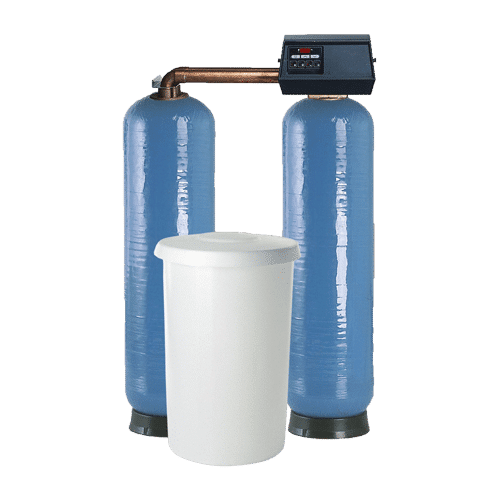Softening plant
Non-softened water leads to quick clogging of each steam boiler with deposits. Therefore, water softening is indispensable. The design of the softening plant depends on the hardness of the fresh water, the required fresh water volume and the plant usage.
The JUMAG softening plant:
Function and Benefit

What is the purpose of softening and what are its advantages?
Protects the boiler from deposits
Softening tailored to your fresh water and plant usage protects your steam boiler from deposits.
Functionality of a JUMAG softening plant
The water to be softened flows through a resin filling in a pressure tank (softening bottles). The hardness-forming calcium and magnesium ions are absorbed by the resin and "soft" sodium ions are emitted into the water. Therefore this is called the ion exchange procedure. The previously hard water turns into soft water due to the exchange of hardness formers.
When the exchanger capacity is exhausted, the resin must be generated with concentrated saline solution. During regeneration, the resin takes on sodium ions and emits the previously collected calcium and magnesium ions to the flushing water. This flushing water is accordingly hard and will usually be discarded. Single units regenerate in a time-controlled manner, always at the same adjustable time. The regeneration does not take place daily, but only when a specified water quantity has flown and the residual capacity is not expected to suffice for another day.
During regeneration, no soft water can be removed for approx. 120 minutes. Double pendulum softening plants consist of two softening bottles and provide soft water without interruption. While one bottle regenerates, the other bottle is in operation.